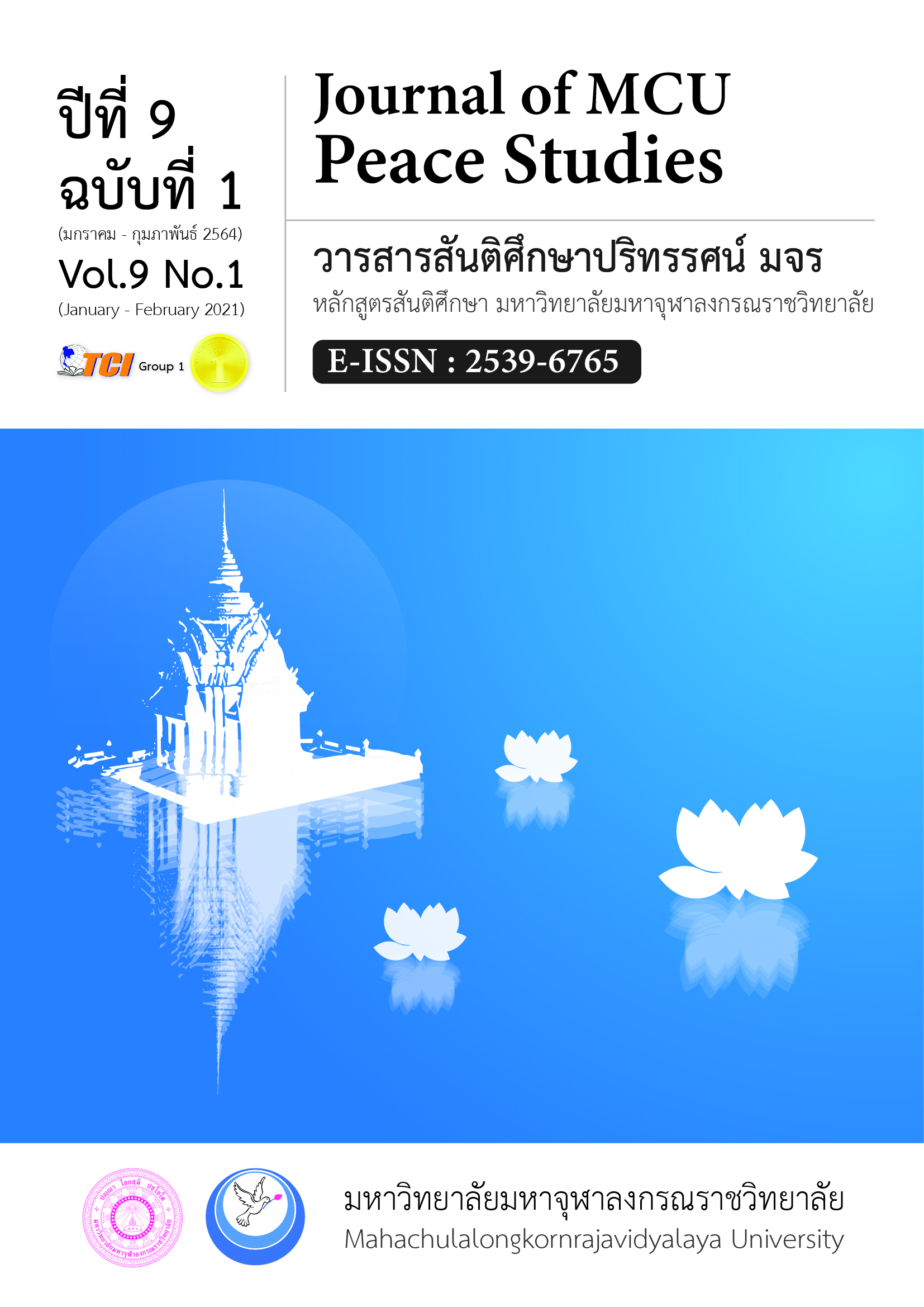การพัฒนาศักยภาพของผู้ประกอบการรับจ้างช่วงการผลิต ที่ส่งผลต่อความสำเร็จของธุรกิจผลิตชิ้นส่วนยานยนต์ในจังหวัดสมุทรปราการ
Main Article Content
บทคัดย่อ
บทความวิจัยมีวัตถุประสงค์เพื่อศึกษาศักยภาพของผู้ประกอบการรับจ้างช่วงการผลิตที่ส่งผลต่อความสำเร็จของธุรกิจผลิตชิ้นส่วนยานยนต์ จังหวัดสมุทรปราการ และเสนอแนวทางการพัฒนาศักยภาพของผู้ประกอบการ กลุ่มตัวอย่างการวิจัย คือ ผู้ประกอบการธุรกิจในเขตจังหวัดสมุทรปราการ 390 บริษัท และกลุ่มผู้เชี่ยวชาญในอาชีพยานยนต์และชิ้นส่วน เครื่องมือที่ใช้เป็นแบบสอบถาม สถิติ ได้แก่ ค่าเฉลี่ย ร้อยละ ค่าเบี่ยงเบนมาตรฐาน ผลวิจัย พบว่า ทักษะประกอบธุรกิจอยู่ในระดับมาก โดยทักษะการทำงานร่วมกันระดับมากที่สุด กระบวนการพัฒนาในการดำเนินธุรกิจ ระดับมาก ซึ่งด้านธุรกิจยานยนต์ ระดับมากที่สุด และศักยภาพของผู้ประกอบการระดับ มาก ซึ่งด้านการวางแผน ระดับมากที่สุด ผู้ประกอบการรับจ้างช่วงการผลิต ที่มีอายุแตกต่างกัน ประสบการณ์ในการทำงาน มีระดับความชำนาญเกี่ยวกับทักษะในการประกอบธุรกิจ กระบวนการพัฒนาในการดำเนินธุรกิจ และศักยภาพที่แตกต่างกัน และจากการพยากรณ์การถดถอยพหุคูณศักยภาพของผู้ประกอบการ พบว่าด้านธุรกิจยานยนต์ บริหารจัดการทรัพยากรทางธุรกิจ เทคโนโลยี ทีมงานสัมพันธ์ การสื่อสาร และพัฒนาทุนมนุษย์ส่งผลกับศักยภาพของผู้ประกอบการรับจ้างช่วงการผลิต มีค่าเท่ากับ .519 และมีการแปรผันร่วมกันทั้ง 6 ตัวแปร อำนาจการพยากรณ์ด้านธุรกิจยานยนต์ บริหารจัดการทรัพยากรทางธุรกิจ เทคโนโลยี ทีมงานสัมพันธ์ การสื่อสาร และพัฒนาทุนมนุษย์ ในรูปคะแนนดิบ (b) มีค่าตั้งแต่ - .63 ถึง .089 และในรูปคะแนนมาตรฐาน (β) มีค่าตั้งแต่ - .21 ถึง .042 และด้านการสื่อสารส่งผลกับศักยภาพอย่างมีนัยสำคัญทางสถิติระดับ .01 และผลการประชุม Focus Group กลุ่มอาชีพยานยนต์และชิ้นส่วน พบว่าการพัฒนาศักยภาพของผู้ประกอบการรับจ้างช่วงการผลิตทุกด้านมีความสัมพันธ์กัน
Article Details
ทัศนะและความคิดเห็นที่ปรากฏในบทความในวารสาร ถือเป็นความรับผิดชอบของผู้เขียนบทความนั้น และไม่ถือเป็นทัศนะและความรับผิดชอบของกองบรรณาธิการ ยินยอมว่าบทความเป็นลิขสิทธิ์ของวารสาร
เอกสารอ้างอิง
Wongvilaivarin, V. (2003). The study of small and medium entrepreneurs thinking styles in Bangkok. (Master’s Thesis). Thammasat University. Bangkok.
Thanasansaenlan, P. (2015). Small Entrepreneurs’ Potential Development in Pathumthani province. SSRU Graduate Studies Journal, 2(2), 74-86.
Wongphaisansirikun, K. (2015). The process of Entrepreneur Development in the University Business Incubator Project in the Lower Northeast. ROMMAYASAN, 13(1), 133-148.
Ministry of Industry. (2016). Strategy for Thai Industrial Development 4.0 for 20 years (2017 - 2036), 1-54.
The Office of Industrial Economics. (2012). Master Plan for Thai Industrial Development B.E. 2012 – 2074. The Office of Industrial Economics. Retrieved February 10, 2018, from http://www.oie.go.th.
Shehnaz T., & T. Ramayah. (2015). Entrepreneurial Competencies and SMEs Business Success: The Contingent Role of External Integration. Mediterranean Journal of Social Sciences, 6(1), 50-61.
Robert S., & David P., N. (2007). Using the Balanced Scorecard as a Strategic Management System. Harvard Business Review, 85(7).
Andreas, R., Johan, W., Lumpkin, G. T., & Michael F. (2009.) Entrepreneurial orientation and business performance: An assessment of past research and suggestions for the future. Journal: Entrepreneurship Theory and Practice, 33(3), 761-787.
Salinesi, C., Kusumah, I., Rohleder, C., & Kusumah, I. (2018). New Approach for Supporting Future Collaborative Business in Automotive Industry. IEEE International Conference on Engineering, Technology and Innovation (ICE/ITMC), 1-9.
Gregory G. D., Lumpkin G. T., & Dess G. (2005). Strategic Management: Creating Competitive Advantages. (7th) ed. UK: Pearson Education.
Wang, H., & Zhang, J. (2016). Research on the relationship between customer characteristics and categories in personal automotive business. Chinese Control and Decision Conference (CCDC) 1003-1008.


